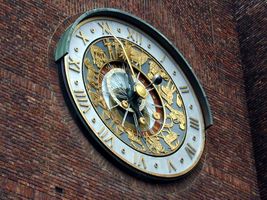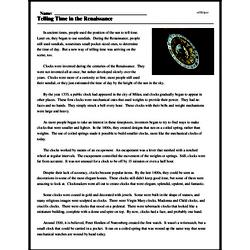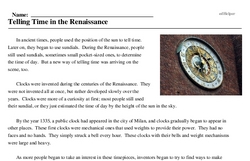Telling Time in the Renaissance
In ancient times, people used the position of the sun to tell time. Later on, they began to use sundials. During the Renaissance, people still used sundials, sometimes small pocket-sized ones, to determine the time of day. But a new way of telling time was arriving on the scene, too.
Clocks were invented during the centuries of the Renaissance. They were not invented all at once, but rather developed slowly over the years. Clocks were more of a curiosity at first; most people still used their sundial, or they just estimated the time of day by the height of the sun in the sky.
By the year 1335, a public clock had appeared in the city of Milan, and clocks gradually began to appear in other places. These first clocks were mechanical ones that used weights to provide their power. They had no faces and no hands. They simply struck a bell every hour. These clocks with their bells and weight mechanisms were large and heavy.
As more people began to take an interest in these timepieces, inventors began to try to find ways to make clocks that were smaller and lighter. In the 1400s, they created designs that ran on a coiled spring, rather than weights. The use of coiled springs made it possible to build smaller clocks, more like the mechanical clocks of today.




